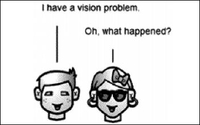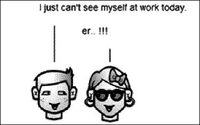
One of the last tech patents to be awarded in 2013 went to
Google for a process that converts conversations between people into online comic strips. What’s the punchline? You’ll have to wait for the last panel to find out.
The
reason this story merits an RTBlog post is that it is a telling way to end a year in advertising and technology innovation. Not that automating social conversations into comics isn’t a nifty
idea, and in some ways, inherently humanizing. It’s just that in other ways, it’s part of a progression that is de-humanizing us by converting our data, behaviors, and now our
conversations, into digital fabrications of ourselves. We call them applications, but when we use them as a proxy for actual human interaction, I think fabrication is a better term.
My concern isn’t the random, one-off experience. Elfing yourself as one of Officemax’s singing/dancing holiday elves, or occasionally using other
forms of avatar can be funny, delightful and creates a new kind of interaction between people. My concern is that every new level of digitization, and the inevitable automation -- and
“optimization” -- that comes with it, just flattens us out into the two-dimensional equivalent of comic strip characters drawn in line art.
Actual comic strip characters are funny -- and very human at the heart -- because someone conceived and draw them. That’s an inherently human process called creation. Turning
ourselves into comic strip characters, I believe, may have the opposite effect.

Whether you do it via programmatic trading, “big data” analytics, creative versioning, or turning peoples conversations into cartoons, the important thing is to
make sure the process makes humans more human, not less. JMHO.
Oh, and about that punchline, well, you know how de-huminzation affects human productivity
and workflow, right?